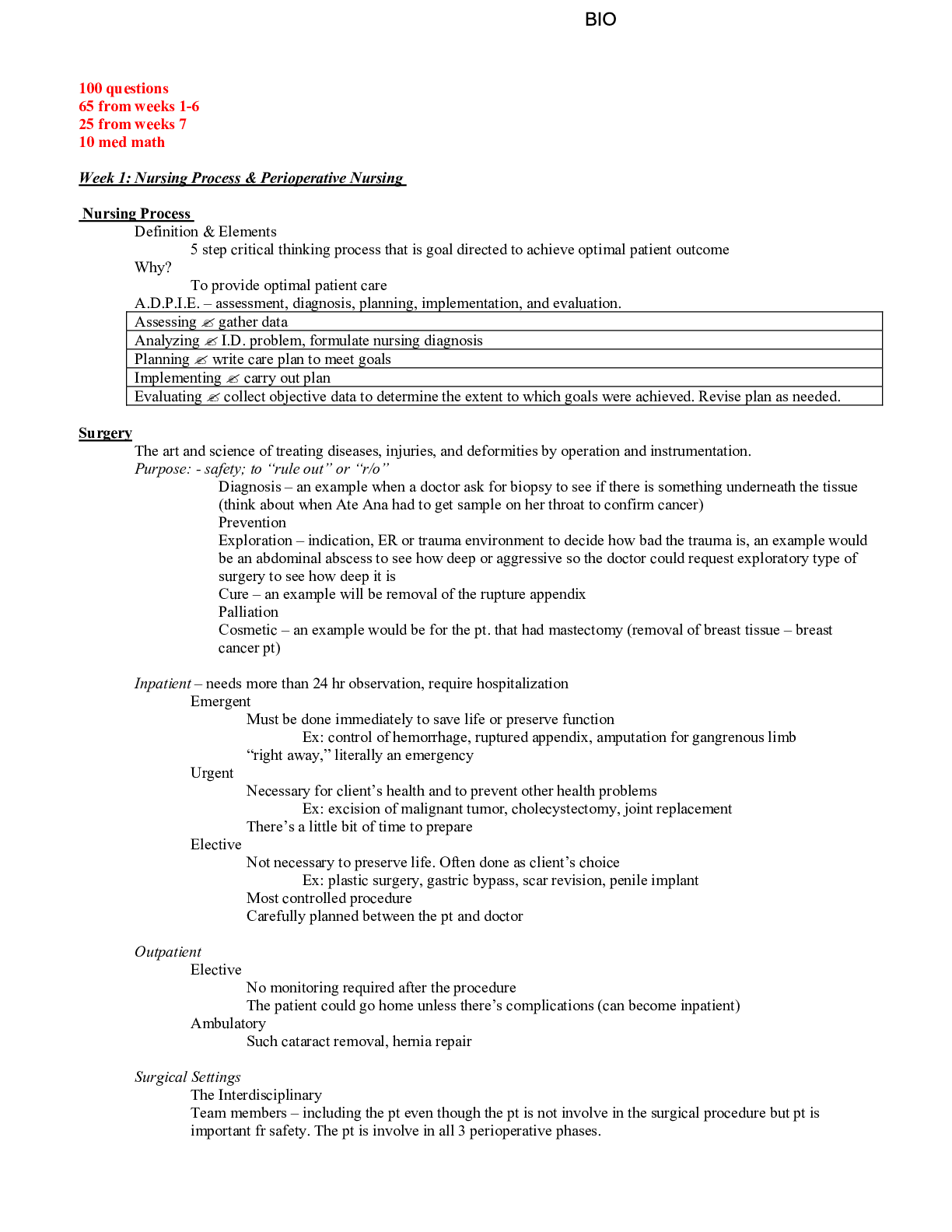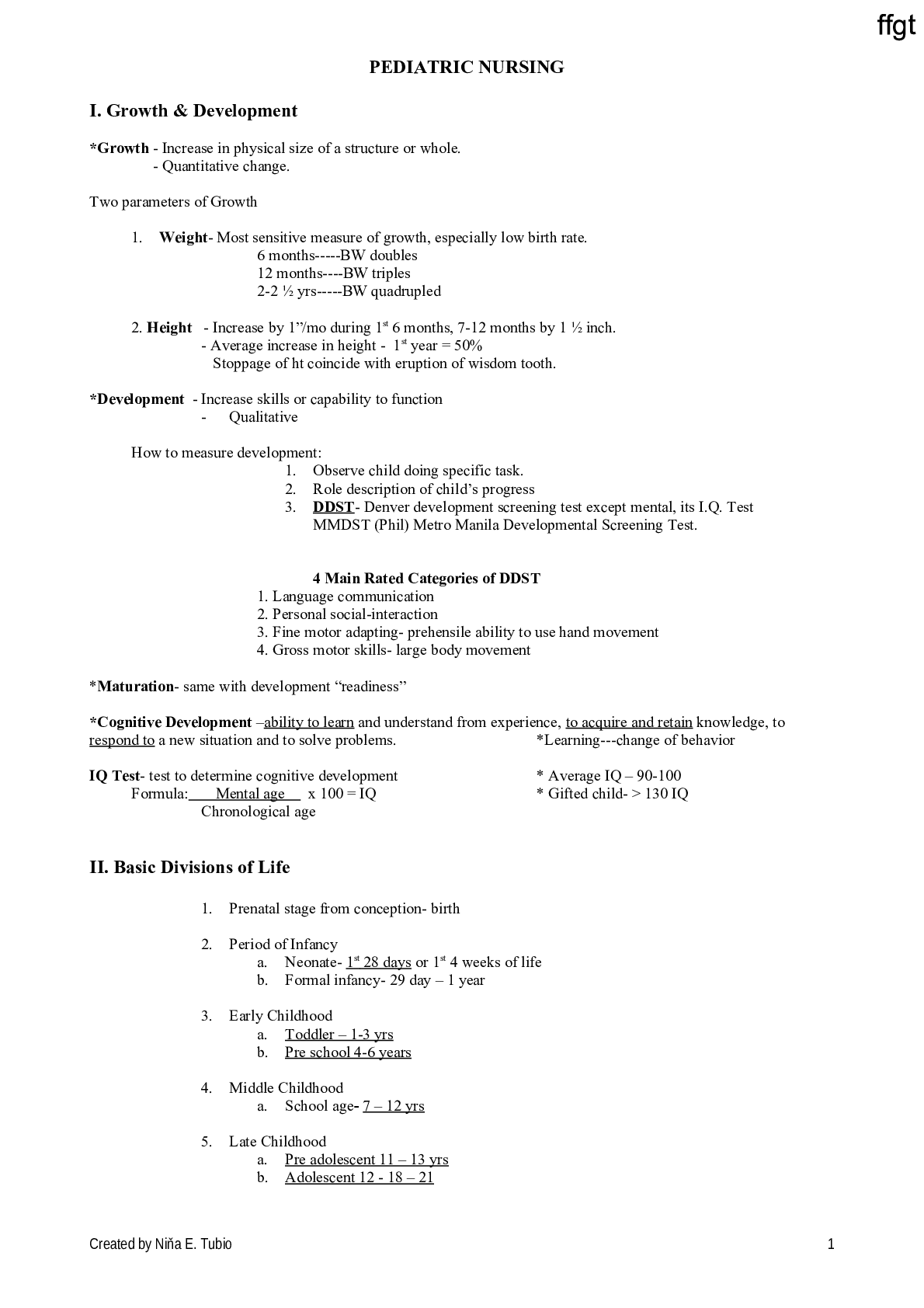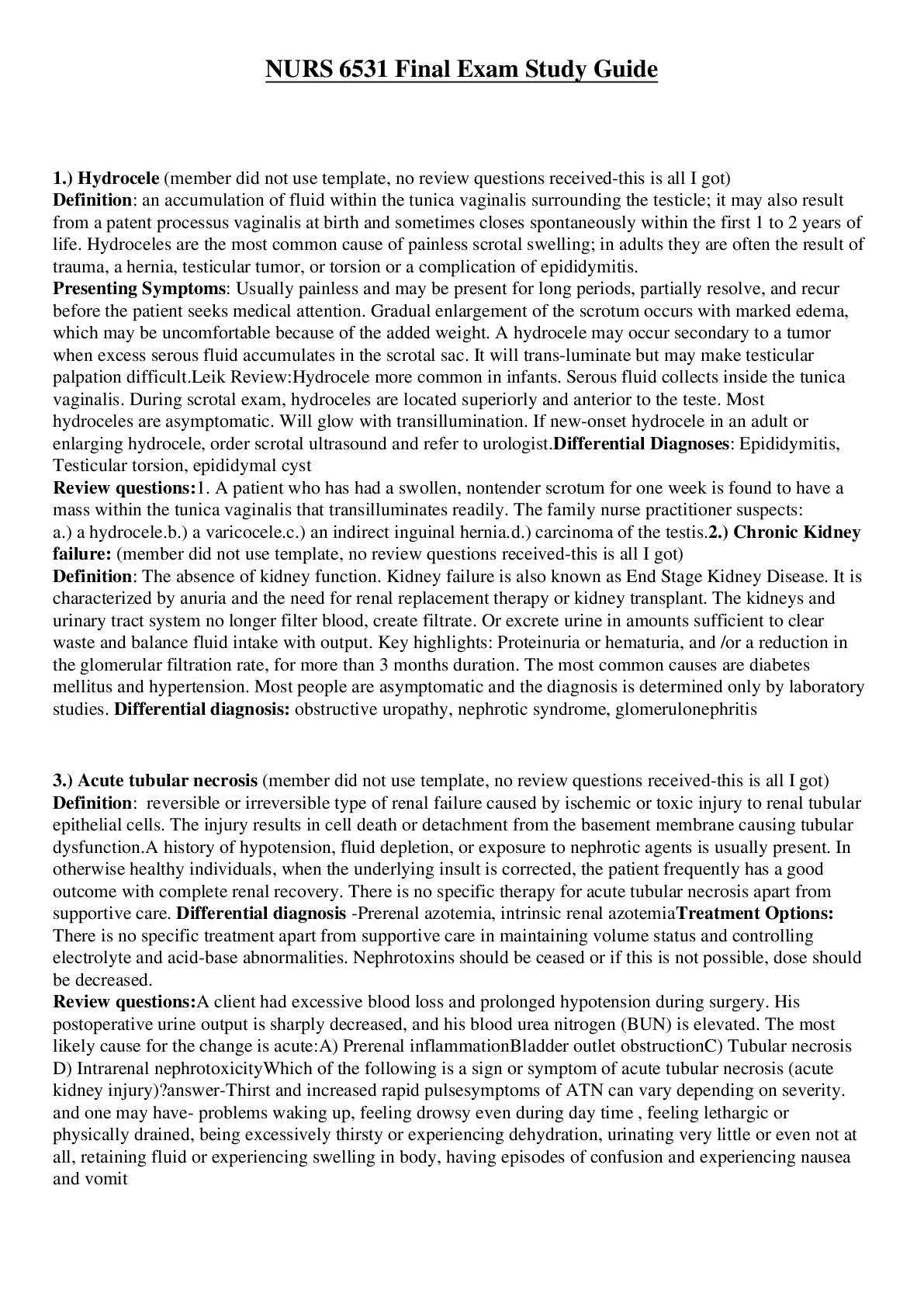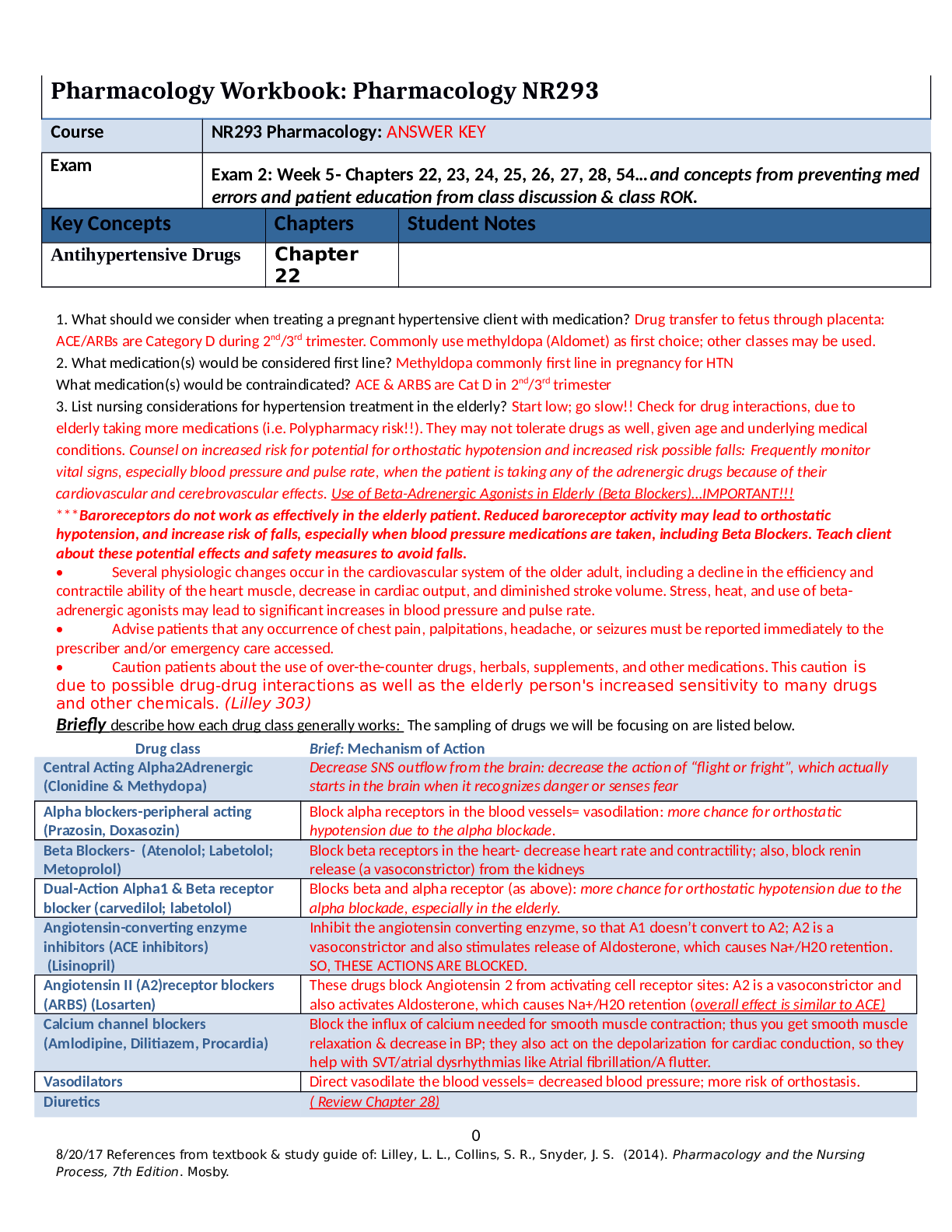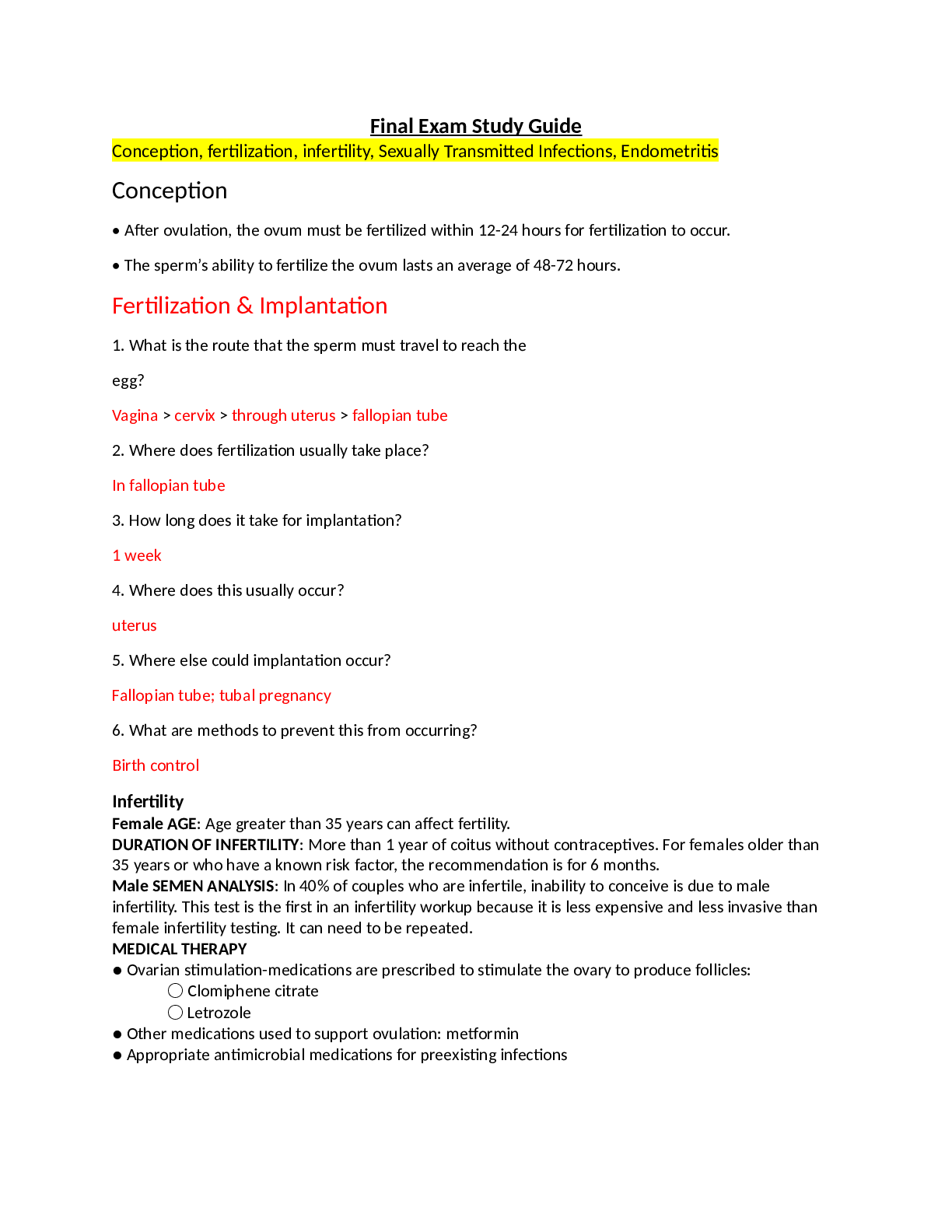Health Care > STUDY GUIDE > asm 275 unit 1 personal study guide. (All)
asm 275 unit 1 personal study guide.
Document Content and Description Below
Module 2 What is Forensic Anthropology? Forensics in modern parlance means the intersection of the legal and medical spheres Forensic anthropology is a brand of both forensic science and ... biological anthropology Specifically, is the field of study that deals with skeletonized or decomposed remains for the purpose of aiding in a legal investigation Goals of the Forensic Anthropologist Determining age, living stature, sex and ancestry of skeletal remains Analysis of bone trauma vs. pathology Assessment of postmortem interval via understanding of postmortem processes Use archaeological methods to recover remains in a through, systematic way Analyze unique features to help identify individuals What isn’t Forensic Anthropology? Forensic anthropology is not the study of death Decedents (dead people) who are fully fleshed are not usually examined by forensic anthropologists Forensic anthropology general does not deal with the remains of individuals who died more than 50 years ago Other Duties of the Forensic Anthropologist Forensic anthropologists are often called to help identify remains in the case of those killed in war and mass disasters Forensic anthropologists may also aid in investigating deaths of little medico-legal significance that nonetheless have profound historical value, such as the murder of the Russian royal family in 1918 The Forensic Analysis Are the remains human? If so, are they forensic significance? How many individuals are represented? When did death occur? How old was the decedent? What sex were they? Can ancestry be determined? Can living stature, weight be estimated? Can any clues as to positive identification be ascertained? Cause of death (ex. gunshot wound, stabbing, etc.)? Manner of death (accident, suicide, homicide) Forensic science is experiment-based Forensic science is pattern-based What are the input variables, those things that affect the outcome? How repeatable is the observation? Module 3 The basis of all forensic anthropology is an intimate knowledge of human skeletal anatomy, growth, function, and structure, including the dentition. This field of study is called OSTEOLOGY. Keys to Success Take intensive course in Human Anatomy and Osteology Identify from Fragments Human or not Bone, side and any pertinent information Appreciate range of variation possible in humans Appreciate sources of variation in humans Sources of Variation in the Human Skeleton What is normal? What is acceptable for humans? Age Sex (also variation related to size and muscularity) Ancestry- local adaption and evolutionary forces Muscularity, conditioning- may affect muscle attachments Occupational- habitual activities may cause deviations from the norm Pathology- study of disease [Show More]
Last updated: 2 years ago
Preview 1 out of 18 pages
.png)
Buy this document to get the full access instantly
Instant Download Access after purchase
Buy NowInstant download
We Accept:

Reviews( 0 )
$7.50
Can't find what you want? Try our AI powered Search
Document information
Connected school, study & course
About the document
Uploaded On
Apr 28, 2022
Number of pages
18
Written in
Additional information
This document has been written for:
Uploaded
Apr 28, 2022
Downloads
0
Views
63



